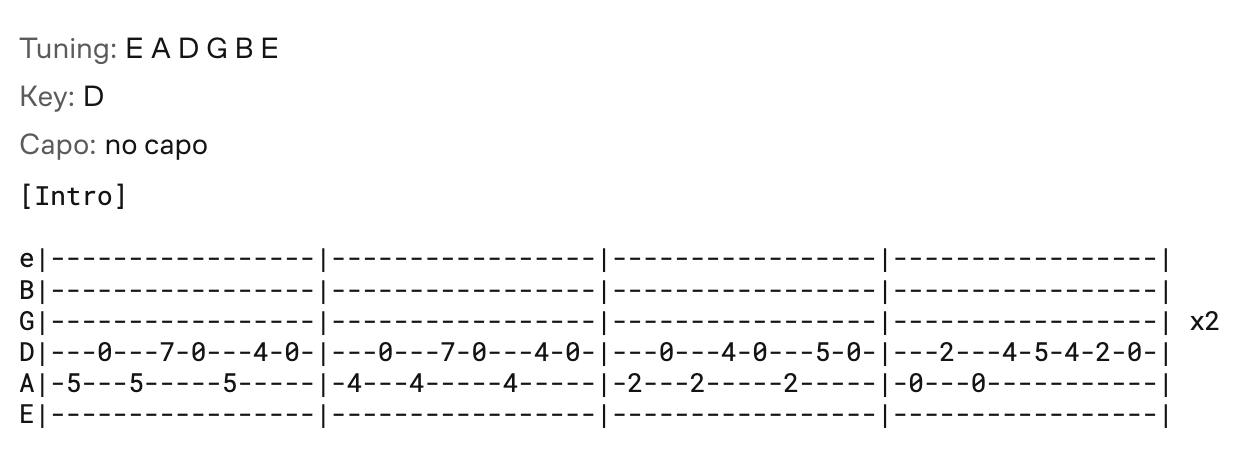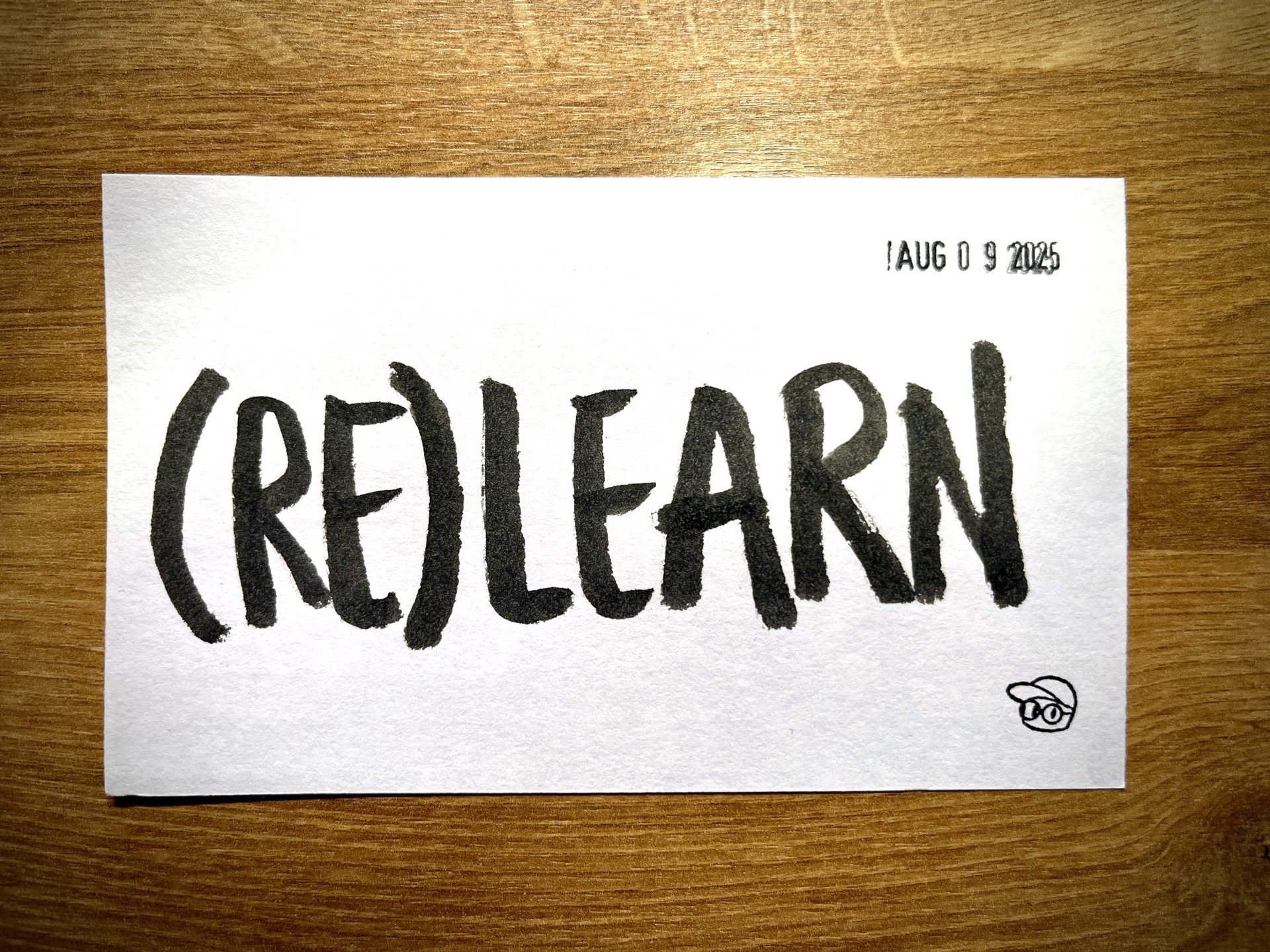Yesterday, I came across this casual but captivating video of legendary guitarist Steve Vai talking about his own personal tone-chasing journey.
One story stopped me cold.
Already a professional musician — someone who’d played in huge bands and recorded multiple albums — Steve decided, in 1983, to relearn how to play guitar.
“I just was getting tired of not having a great tone. I went through all these amplifiers… I was searching for something that sounded like some of the things I was hearing at the time…”
In pursuit of his signature sound, Steve hit an ego-shaking realization: the problem wasn’t his gear. It was him.
It came down to how he picked the strings. Wild, really — to see an accomplished, experienced musician choose to relearn something so fundamental to making music in the first place.
It’s like a professional writer going back to relearn their ABCs.
A respectable, humbling realization. One where you have to be brutally honest with yourself — open mind, ego aside — and be willing to do the work. And Steve? He did the work.
And you can hear the result — in every note that is undeniably Vai.
Beginning
That clip hit me because my own general learning style is… different.
I almost never start with the fundamentals. In fact, I kind of despise it. I start with whatever gets me to the thing I care about the fastest.
When I was 13, my parents got me a Fender Squier starter kit — black Stratocaster and tiny Fender branded practice amp. I didn’t start with chords. I didn’t start with scales. I didn’t touch music theory.
I had one goal: learn “Stay Together for the Kids” by Blink-182. That guitar intro spoke to me.
So there I was — 13-year-old me, staring down at this awkward Squier in my hands. A thing I didn’t really know how to hold. A thing that made my fingers ache every time I tried. And still, I was going to play it back… somehow.
Tabs
I needed to know what to press — which string, which fret — to make that melody happen. So I fired up Internet Explorer on our Windows XP-powered computer, typed in “Stay Together for the Kids Blink 182 guitar” (or something close), and stumbled on a magical thing called “Tabs.”
I still remember that rush — the jolt of excitement and empowerment when I first saw the guitar tabs for the song. I couldn’t read musical notation. I didn’t know what the dots or stems meant. But tabs? A neat little row of numbers, spaced by hyphens, wrapped up in a printable.txt file? That I could understand. I hit print, pulled the sheet from the tray, and got to work.

5-0-5-7-5-0-4-0....
That was the first song I ever learned. The way I learned it. And the way I’d keep learning every song that followed.
Gaps
Eventually, after several years, I hit the same wall. The same frustration. I went through the usual routine — pointing fingers, blaming the guitar, the gear. But I had to be honest with myself: my tone sucked because I didn’t know how to hold the strings properly. A basic skill that no amount of distortion could hide.
So I put in the work — grinding through hours of slow, monotonous, deeply un-fun exercises on my guitar. Metronome clicking in my ears.
1–2–3–4... 1–2–3–4... Over and over.
My playing improved, sure — but more importantly, I started to understand the technique. The feel of the string under my fingers. The mechanics of motion and contact. The way metal meets wood, and how the smallest shift changes everything.
Basics
While running those 1–2–3–4 drills, I started to wonder — should I have begun here? With the basics? The things you’re supposed to do (probably)… instead of just diving in and figuring it out as I went?
My answer then — and my answer now, more than 20 years later — is a hard, unapologetic: Hell no!
If I’d started with scales, theory, and all that formal stuff, I would’ve quit almost immediately. I didn’t pick up a guitar to “learn guitar.” I picked it up to play Blink-182. I wanted to get good enough to play Metallica.
Fundamentals feel frustratingly pointless when you have nothing to attach them to. But once you care? Once you’ve been in the mess long enough to want to get better? You’ll swallow your pride. Grit your teeth. Befriend the boredom.
Because now, the basics aren’t abstract — they’re in service of the thing you love.
Which means… maybe skipping steps isn’t “wrong” at all. Maybe it’s strategic. Passion first, precision later. Because passion (and curiosity) can carry you through the hardest part of learning — starting. And then the second hardest — staying.
Learning
To this day, I can’t read sheet music. Haven’t needed to.
But if someday I want to learn scales or formal theory? I’ll do it. I’ll slow down. I’ll even play things that don’t sound like music — because I’ll know why I’m doing it.
Because learning — and relearning — is not a straight line. It’s loops. Spirals. Circles you come back to with better shoes and a little more wind in your lungs.
And sometimes, in one of those loops, you catch yourself mid-step — after years, maybe decades — and think:
“Oh. Damn. I’ve been doing this wrong.”
That’s the moment where you can double down on pride… or put it down entirely. Where you choose to pick the thing back up and start again — not from scratch, but from experience. It’s treating the basics not as something beneath you, but as something you now get to deepen.
Going back doesn’t mean you failed — it means you noticed. Relearning isn’t regression. It’s respect. For yourself. For your craft. For the reason you began at all.
Start with whatever pulls you in. Come back for the basics when you’re ready. And when you do — bring the same fire, the same obsession, the same stubbornness you had on day one.
Because that’s not going backwards. That’s leveling up.
